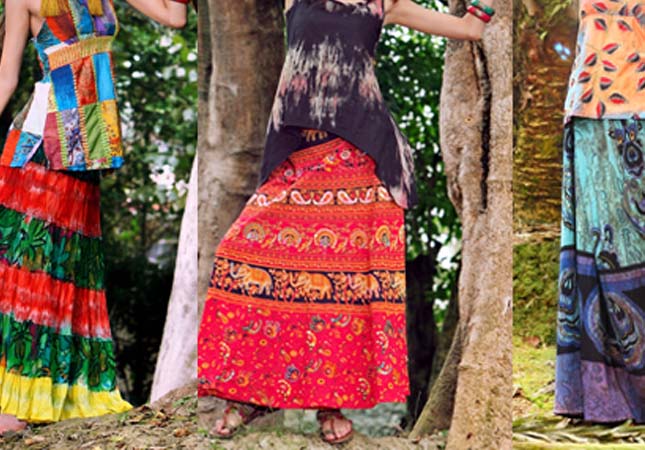Indian clothing is mainly made of natural cotton, linen and silk, woven by ancient weaving machine or hand-woven craftsmanship with traditional tie-dyeing and printing techniques, forming a distinct clothing culture in the world. It is all operated manually in the whole weaving process from the collection of raw materials, yarns weaving, fabrics dyeing, printing promotion to the final embroidery and beading, which make the clothing filled with a particular flavor.

India is the 9th largest country in the world but with the most arable land in the world because of the tropical monsoon climate and the variable temperature in India, which makes it wealthy in natural resources. India is the largest jute producer in the world, the second largest producer of raw silk, and the third largest producer of cotton. It has the top 1 natural silk production in the world, which made India one of the world's leading textile count, further promoting the diversity of Indian clothing culture.
India Cotton
The history of Indian cotton is as ancient as the history of India. As early as 7,000 years ago, the Dravidians of the Indus Valley began to grow cotton as a crop and learned how to spin cotton into cloth and make it into clothes and other daily necessities. India is located in the subtropical climate area, which brings sufficient water and sunlight. It is highly conducive to the production and cultivation of cotton. However, the early Indian cotton followed traditional varieties and cultivation methods that had low productivity and quality.
The Indian cotton industry developed considerably in the 17th century due to British colonial rule. In the 15th century, the European explorer Batrom Dias discovered the Cape of Good Hope and traveled eastward to reach the Indian peninsula. Indian cotton has been introduced to Europe since then. European aristocrats are extremely interested in this kind of fabric with a soft and pleasant feeling and it is easy to wash and even changed their fashion and clothing style because of it. The British began to colonize India for a century since the 19th century. The British East India company started to rectify the Indian cotton industry with European production standards to meet the high-quality requirements of European aristocrats for Indian cotton. They introduced no-pollutio organic cotton and planted them on a large scale in the western states of Maharashtra and Gujarat.
The fertile soil, natural rainwater irrigation, and long-time sunshine make this kind of organic cotton favored by the European market and the Indian cotton has been exported to foreign markets since then.
Cotton is already the largest industry and is regarded as the "King of Plants", known as "Platinum" in India. The strong production labor force has achieved the high quality and high yield of Indian cotton. Compared with other cotton, Indian cotton is featured in that the production process is all manual labor. Indian cotton has great water absorption and great strength in white color, and can be made into a variety of textiles. It is easy to dye. The clothes made of Indian cotton are light and soft, and the color will be brighter.
Jute
Jute is an ancient raw material. It is also called the "golden fiber". It was first used to make simple tools such as ropes and cloth bags by ancient Indians. However, with the rapid development of the Indian textile industry, modern Indians can weave jute into fine fabrics, and use superb bleaching and dyeing techniques to make linen into daily clothes.
Besides cotton, jute is the most valuable textile material that can be entirely degraded. It is a totally environmentally friendly material. Indians skillfully use the rough parts of hemp to make carpets, sacks, curtains, and ropes, while using the fine parts to produce silky fine fabrics. The natural hemp fabric has the UV protection function, which can be used to isolate cold, heat, and anti-static without causing static electricity to the human skin, is one of the most popular environmentally friendly fabrics in the current market.
India is the largest jute producer in the world, and its natural hemp garments are well-loved by their ancient and gorgeous Indian civilization.




